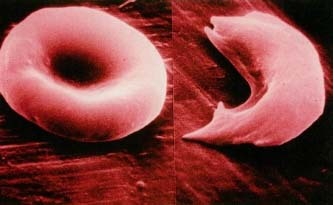Thalassaemias (α- and β-) and hemoglobinopathies in general are the most frequent genetic disorders in Mediterranean countries, in Arab countries, in Southeast Asia, India and elsewhere. Although in most cases it is possible to identify carriers for β-thalassaemia using simple blood tests, knowledge of the exact mutations for each case is vital for prenatal diagnosis and reproductive genetic counseling. Using a combination of molecular genetics techniques, mutations of the hemoglobin β-chain gene as well as deletions/rearrangements of the wider region (ΗΒΒ at 11p) are screened for, allowing us to detect virtually all possible β-thalassaemia mutations (>99.99% of mutations in Greece and most other regions).
β-thalassaemia and sickle-cell anaemia

It is essential that you provide us with copies of the blood test results of individuals to be tested (blood count, hemoglobin electrophoresis, HbA2 quantitation). For prenatal diagnosis, prior knowledge of the parental mutations is essential and must precede testing of the fetus.
For all prenatal molecular genetic testing, we perform analysis of polymorphic STR markers from a maternal blood sample and the fetal sample, in order to exclude any possible maternal cell contamination. Thus, for prenatal diagnosis, 1-2ml of a maternal blood sample should always accompany the fetal sample (amniotic fluid or CVS).